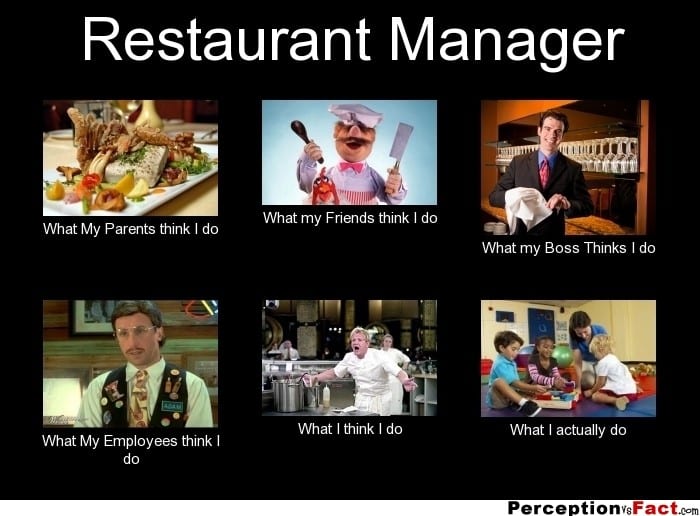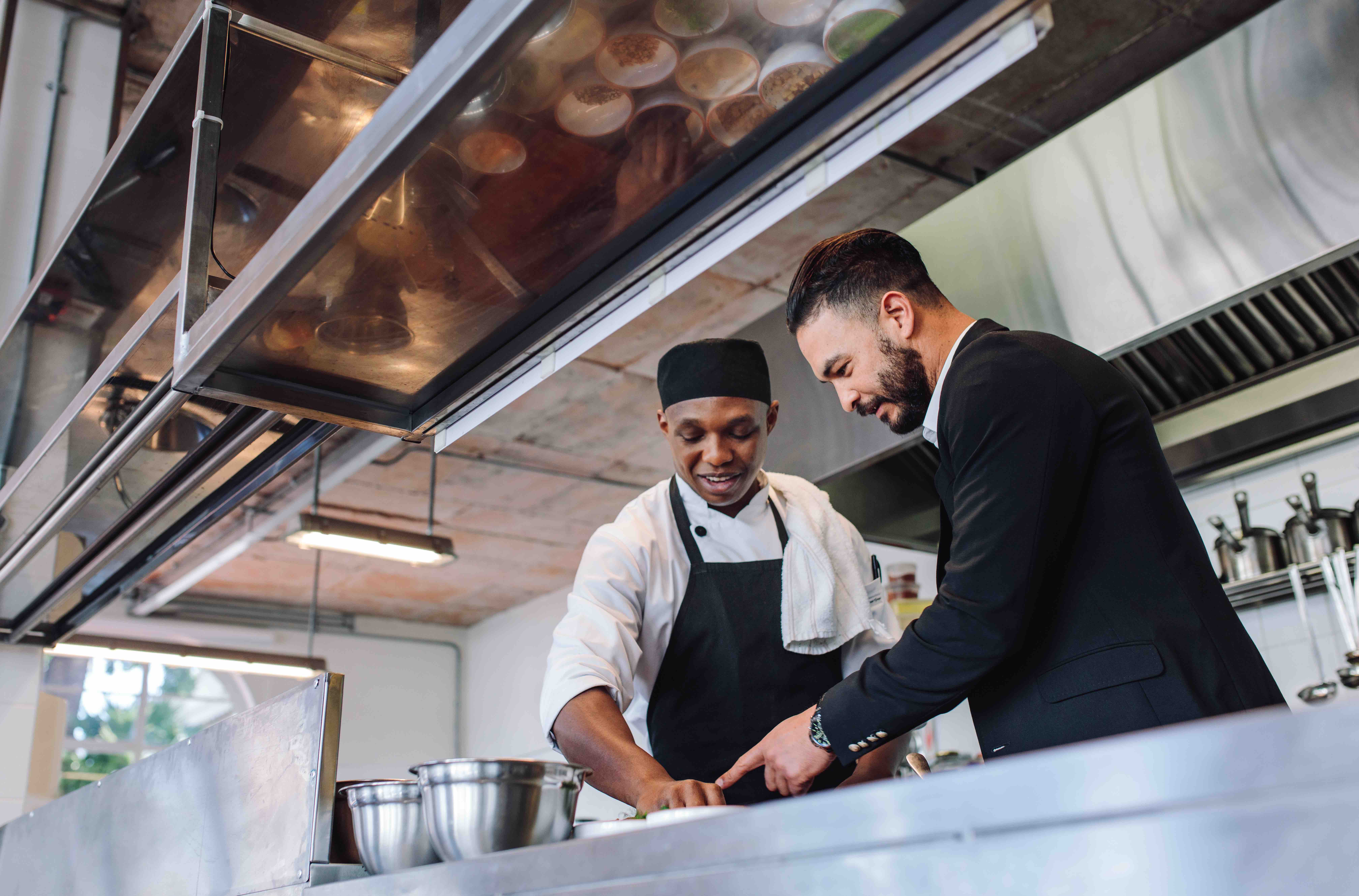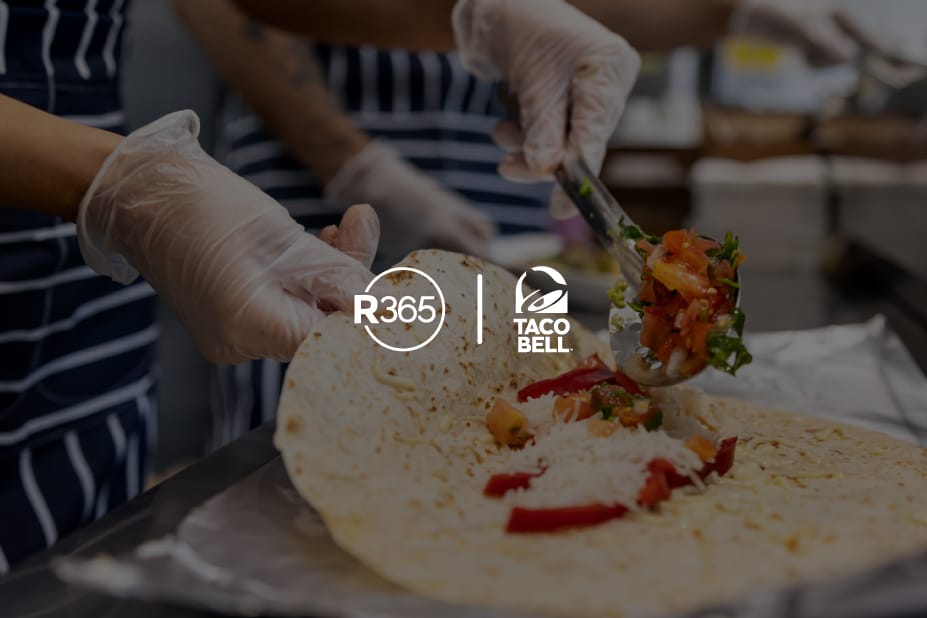At surface level, the general manager is responsible for the daily operations of the restaurant which includes restaurant staffing, scheduling, and supervision while ensuring a quality guest experience. But not everyone realizes what kind of detail and responsibilities go into making this happen. Restaurant general managers also need expertise in accounting, payroll, food costing, kitchen operations, food inventory management, and more.
What is the career path to be a restaurant general manager?
According to Zippia.com, 44% of restaurant general managers have earned a bachelor’s degree and 23% hold an associate degree, typically in the study business, hospitality management or accounting. But often times, it is the experience earned from years in the industry that make the best general managers. Restaurant general managers and owners alike often work their way up from low-level entry positions like bussers, dishwashers, or servers, learning the ins and outs of the industry along the way.
What is the salary of a restaurant general manager?
According to glassdoor, the estimated total pay for a Restaurant General Manager is $62,602 per year in the United States, with an average salary of $56,576 per year. The estimated additional pay is $6,027 per year. Additional pay could include cash bonus, commission, tips, and profit sharing.

What are the job expectations for a restaurant general manager?
Hiring and retaining restaurant staff. Restaurant hiring and training requires consistent effort. Many restaurants struggle with issues surrounding employee turnover that aren’t a quick fix, grappling with growth opportunities, providing work/life balance, or maintaining a healthy culture in a high-pressure workplace environment.
Onboarding and training. Once the candidates are hired, the next step should involve an effective and engaging onboarding process. During this stage, managers need to clearly articulate the restaurant’s policies and procedures, providing clear expectations into “what” and “how” involved in each role.
Accounts payable. The accounts payable cycle follows a standard process and is sometimes called procure to pay. Managers determine the number of items they need and procure those items. Once the items are delivered, they receive an invoice to review and pay in a timely manner. Then the cycle repeats.
Payroll. Payroll is a challenging, complex process because restaurants have a combination of salaried and various kinds of hourly employees and tips, all governed by different regulations that vary per jurisdiction.
Managing labor costs. Labor cost is one of the highest expenses for a restaurant, typically taking up to 25-35% of revenue. Every general manager should be tracking restaurant labor costs, from the nitty-gritty details to the high-level metrics.
Menu engineering. Menu engineering helps determine whether menu items are overpriced or underpriced, whether recipe portions or ingredients need to be modified, and monitors menu performance. It allows restaurant managers to make informed decisions about the popularity versus profitability of menu items.
Recipe costing. Recipe costing is tracking the cost of every individual ingredient used in a single dish. It covers the individual ingredients for the menu item’s portion size, down to the penny. Consistent, accurate recipe costing relies on a few key elements: standardized recipes, accurate restaurant inventory management, and up-to-date vendor prices.
Forecasting. Forecasting uses historical sales to predict what needs to be purchased and prepared for the next comparable sales period. Over-ordering and over-prepping lead to food waste that drives up food costs. Knowing in advance that Mondays and Saturdays will likely have different sales levels, allows managers to account for this fluctuation.
Restaurant inventory management. Restaurants generally have high levels of perishable inventory. The ability to manage inventory greatly affects food cost. Understanding inventory management is a foundational step for running a profitable restaurant.
Building maintenance. Part of restaurant management is creating a plan for daily maintenance and emergencies. This includes overseeing that cleaning, extermination, kitchen equipment, plumbing, heating, ventilation, and air conditioning (HVAC) all run smoothly.
Marketing. Online presence is a key component of a successful marketing effort for a restaurant. Marketing your restaurant in a constantly changing digital world can be challenging, but is essential for retaining existing patrons and bringing in new customers.
What are some restaurant general manager best practices?
Create a data-driven culture. Data is a powerful tool that can help improve nearly every area of business while simultaneously lightening the workloads on team members. Data can be used to streamline operations, provide better customer service, and drive strategic decisions.
Lead by example. A leader who helps out the team, gets their hands dirty, and positively motivates others will garner a stronger following than someone who simply manages their employees’ daily duties. Reflect the values that you want to see in your employees, and they will follow suit.
Establish clear goals associated with tangible strategies. Breaking the restaurant’s vision down into specific action items will help get you closer to your goals. Each employee should understand how their individual contributions affect the overall business. Saying “Bob, over the next month let’s work on getting to four turns per table during weekday lunches” or “Sally, I need you to really concentrate on selling at least 20 of this week’s special” creates specific actions that can be measured.
Build your team with people who possess strengths you lack. Successful leaders possess a keen self-awareness of their own weaknesses and surround themselves with others who excel in those areas. Take an assessment of areas that you may need help in and hire for those traits. Not only will your business thrive, but your employees will also feel appreciated for their skills and less likely to seek employment elsewhere.
Practice empowerment. Good leaders set a clear vision, then get out of the way. If you have done a good job of building your team with smart, hardworking employees, then you do not need to micromanage their daily activities. It is imperative that employee can function in your absence; especially with decisions that have an urgency about them.
Conclusion
Being a restaurant general manager is a difficult job and can be quite overwhelming. That’s where Restaurant365 can help. Restaurant managers can gain a 360-degree view of their operations while saving time, minimizing errors, and helping staff work better together in a secure on-line environment by implementing a system like Restaurant365.
Restaurant365 incorporates accounting, inventory, scheduling, operations, payroll+HR, and reporting within one cloud-based platform. R365 integrates with your POS system, vendors, and bank.



